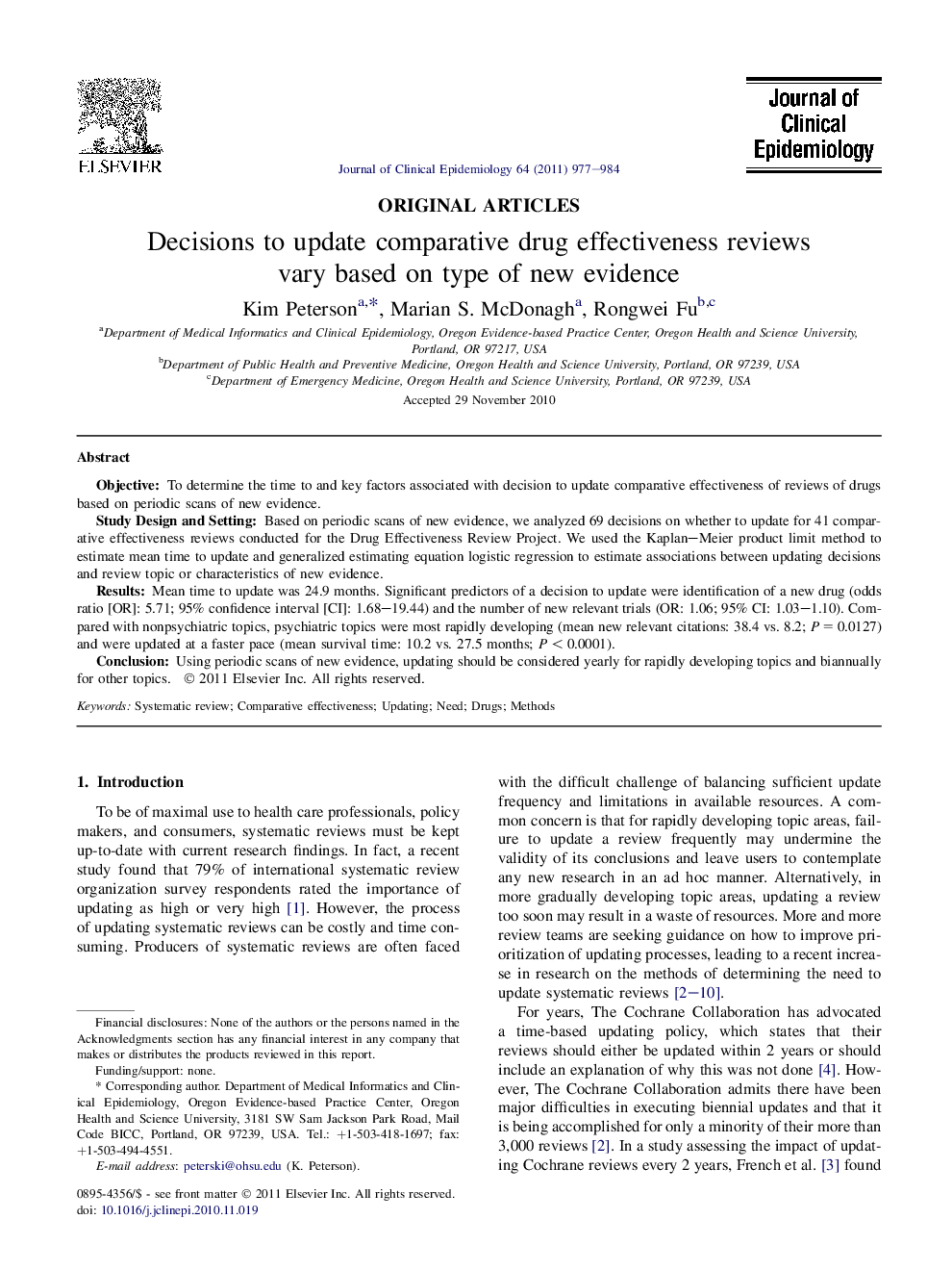| Article ID | Journal | Published Year | Pages | File Type |
|---|---|---|---|---|
| 1082870 | Journal of Clinical Epidemiology | 2011 | 8 Pages |
ObjectiveTo determine the time to and key factors associated with decision to update comparative effectiveness of reviews of drugs based on periodic scans of new evidence.Study Design and SettingBased on periodic scans of new evidence, we analyzed 69 decisions on whether to update for 41 comparative effectiveness reviews conducted for the Drug Effectiveness Review Project. We used the Kaplan–Meier product limit method to estimate mean time to update and generalized estimating equation logistic regression to estimate associations between updating decisions and review topic or characteristics of new evidence.ResultsMean time to update was 24.9 months. Significant predictors of a decision to update were identification of a new drug (odds ratio [OR]: 5.71; 95% confidence interval [CI]: 1.68–19.44) and the number of new relevant trials (OR: 1.06; 95% CI: 1.03–1.10). Compared with nonpsychiatric topics, psychiatric topics were most rapidly developing (mean new relevant citations: 38.4 vs. 8.2; P = 0.0127) and were updated at a faster pace (mean survival time: 10.2 vs. 27.5 months; P < 0.0001).ConclusionUsing periodic scans of new evidence, updating should be considered yearly for rapidly developing topics and biannually for other topics.
